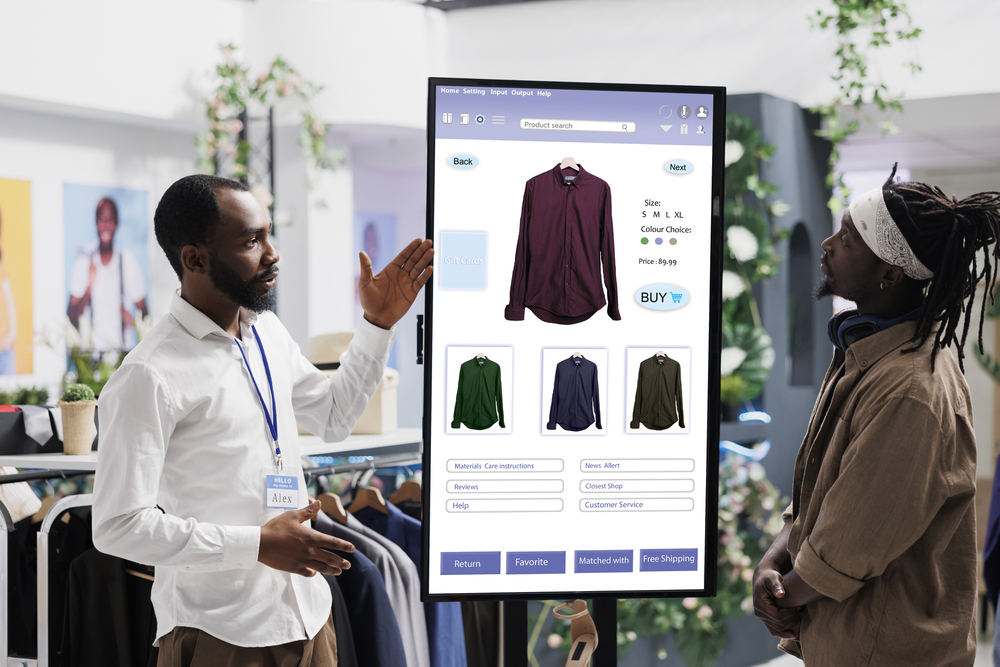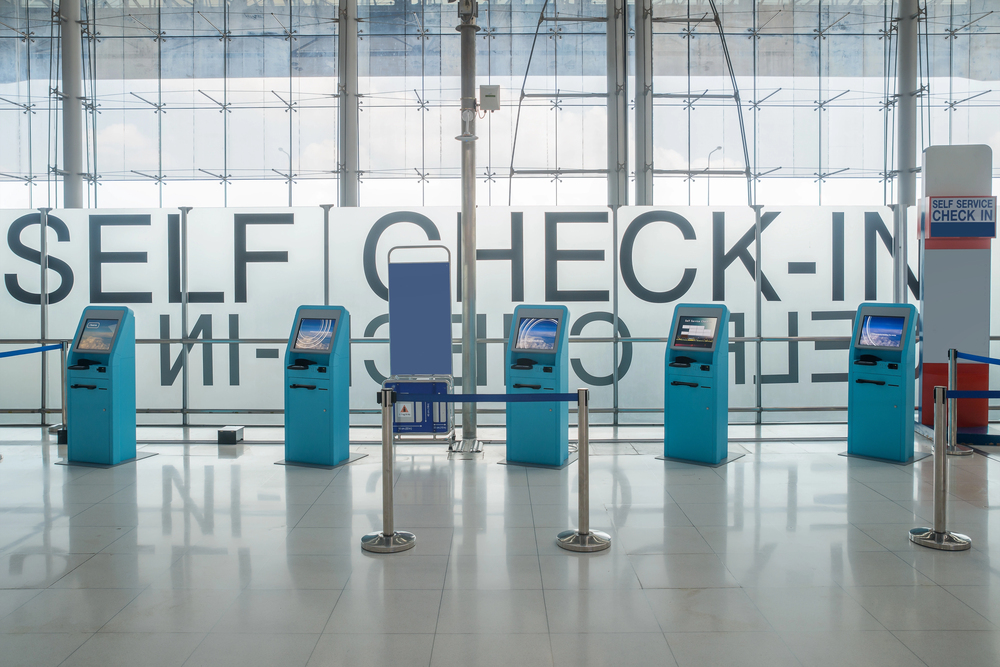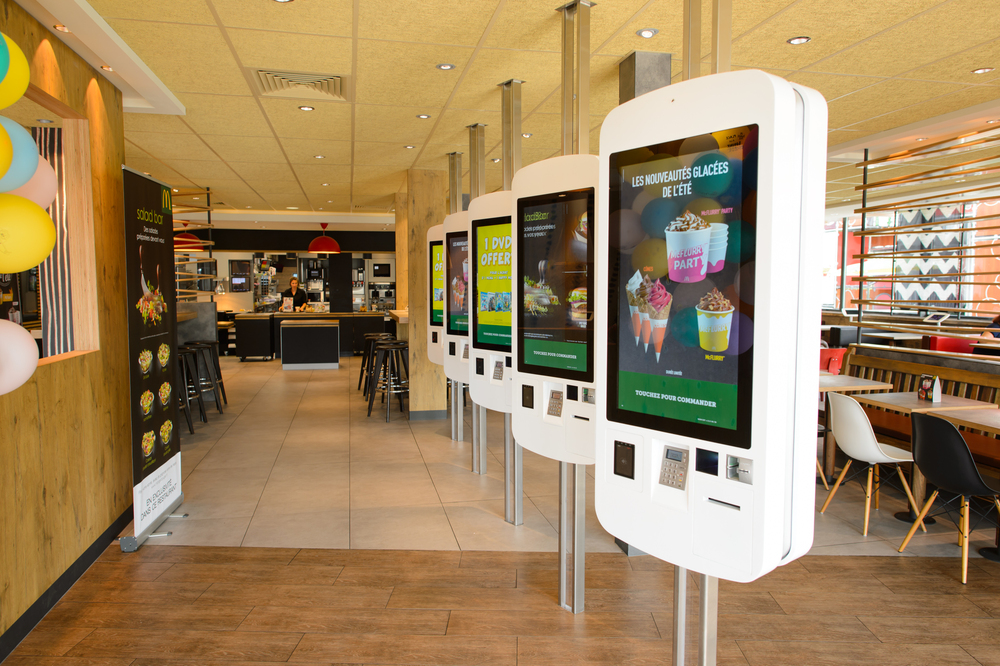As the retail landscape continues to evolve, businesses must adapt to new technologies and consumer behaviors to stay competitive. Signage, a critical component of retail branding and customer engagement, is undergoing significant transformations. In 2024, retail chain signage will be influenced by advancements in technology, sustainability efforts, and innovative design trends. Understanding these changes can help businesses enhance their visibility and connect more effectively with their customers.
Key Takeaways
- Technological Advancements: AI, AR, VR, and IoT-enabled signage are revolutionizing customer interaction and personalization.
- Sustainability: Increased use of recycled materials and energy-efficient solutions reflect growing environmental concerns.
- Design Trends: Minimalist aesthetics, bold typography, and vintage-inspired designs are popular in modern signage.
- Smart Integration: Smart technology integrates signage with smartphones and other devices for seamless customer experiences.
- Future Growth: The retail signage market is expected to grow significantly due to advancements in technology and a focus on sustainability.
Comparison Table
| Aspect | Current Trends | Future Expectations |
| Technology | AI, AR/VR, interactive displays | Enhanced AI, more immersive AR/VR, widespread IoT adoption |
| Sustainability | Use of recycled materials, energy-efficient LED lighting | Increased use of solar power, more eco-friendly materials |
| Design | Minimalist designs, bold typography, vintage-inspired elements | Dynamic color schemes, integration with store architecture |
| Customer Experience | Personalized content, real-time updates | Seamless omnichannel experiences, higher interactivity |
| Market Growth | Steady growth due to technological and design innovations | Significant growth driven by sustainability and smart tech |

Technological Innovations in Signage
Integration of AI for Personalized Customer Experiences
Artificial Intelligence (AI) is revolutionizing retail signage by enabling highly personalized interactions with customers. AI-driven signage systems can analyze customer data to deliver targeted advertisements and recommendations in real-time. This personalization increases engagement and can lead to higher conversion rates. For instance, digital displays equipped with facial recognition and AI can adjust content based on the viewer’s demographics and behavior.
Augmented Reality (AR) and Virtual Reality (VR) Applications
AR and VR are becoming more prevalent in retail signage, offering immersive experiences that can attract and retain customer attention. AR can enhance in-store displays by overlaying digital information onto physical products, allowing customers to see additional details or promotions through their smartphones. VR can create virtual store environments where customers can explore products in a simulated space, providing a unique and engaging shopping experience.
Interactive Digital Displays and Touchscreen Technology
Interactive digital displays and touchscreen technology are transforming the way customers interact with retail environments. These technologies allow for real-time updates and customer engagement, making the shopping experience more dynamic and informative. For example, touchscreens can be used for self-service kiosks, product information lookups, and even virtual try-ons for clothing and accessories. This interactivity not only improves customer satisfaction but also provides valuable data for retailers to optimize their offerings.
Sustainability and Eco-Friendly Materials
Use of Recycled and Sustainable Materials in Signage
Sustainability is a growing concern for both consumers and businesses. Retailers are increasingly using recycled and sustainable materials for their signage to minimize environmental impact. Materials like recycled plastics, reclaimed wood, and eco-friendly inks are being used to create signage that aligns with green initiatives. This not only reduces the carbon footprint but also resonates with eco-conscious consumers.
Solar-Powered and Energy-Efficient Signage Solutions
Energy-efficient signage solutions, such as solar-powered signs, are becoming more popular in the retail industry. Solar-powered signs reduce reliance on traditional energy sources and lower operational costs. Additionally, LED lighting, known for its energy efficiency and long lifespan, is commonly used in modern signage to enhance visibility while being environmentally friendly.
Design Trends
Minimalist and Clean Design Aesthetics
Minimalist design continues to dominate retail signage trends, emphasizing clean lines, simple color palettes, and uncluttered layouts. This approach not only looks modern and sophisticated but also helps communicate messages clearly and effectively. Minimalist designs ensure that the signage is easily readable from a distance and does not overwhelm the viewer with excessive information.
Bold Typography and Dynamic Color Schemes
Bold typography is making a strong statement in retail signage, helping brands stand out and enhance their visibility. Dynamic color schemes that change with the time of day or season add an element of surprise and keep the visual interest alive. This trend allows retailers to keep their branding fresh and relevant, capturing the attention of passersby and drawing them into the store.
Vintage-Inspired Designs with Modern Twists
Nostalgia plays a significant role in consumer preferences, and vintage-inspired signage designs are making a comeback. These designs blend classic elements with modern twists, creating a sense of familiarity while still feeling contemporary. Using vintage fonts, distressed finishes, and retro color palettes, retailers can evoke a sense of tradition and trust, appealing to both older and younger generations.
Smart and Connected Signage
IoT-Enabled Signage for Real-Time Updates and Customer Interaction
The Internet of Things (IoT) is transforming retail signage by enabling real-time updates and interactive capabilities. IoT-enabled signs can connect to various devices and systems to provide up-to-date information, such as promotions, inventory levels, or weather conditions. This connectivity allows retailers to dynamically adjust content based on real-time data, enhancing the relevance and timeliness of the information displayed. Moreover, IoT-enabled signage can interact with customers’ smartphones or in-store devices, creating a more engaging and personalized shopping experience.
Smart Technology for Integrating Signage with Smartphones and Other Devices
Smart technology integration is another significant trend in retail signage. By connecting signage with smartphones and other devices, retailers can offer a seamless and interactive customer experience. For instance, QR codes on digital signs can direct customers to product pages, special offers, or loyalty programs on their smartphones. Additionally, beacons and NFC (Near Field Communication) technology can push notifications or personalized messages to customers’ devices as they approach certain displays. This level of integration helps bridge the gap between physical and digital retail spaces, providing a cohesive and engaging shopping journey.

Enhancing Customer Experience
Digital Signage as a Tool for Seamless Omnichannel Experiences
Digital signage is a powerful tool for creating seamless omnichannel experiences. By integrating digital signs with e-commerce platforms, mobile apps, and in-store systems, retailers can provide a consistent and unified customer journey across all touchpoints. For example, digital signs can display online reviews, social media feeds, or user-generated content, helping to connect the in-store experience with the online world. This integration not only enhances the customer experience but also encourages cross-channel interactions and loyalty.
Personalized Content Delivery Based on Customer Data and Behavior
Personalization is key to effective customer engagement, and digital signage is increasingly being used to deliver tailored content based on customer data and behavior. Using data analytics and machine learning, retailers can segment their audience and customize the content displayed on digital signs to match individual preferences and shopping habits. This could include personalized product recommendations, targeted promotions, or content that aligns with the customer’s previous interactions with the brand. Such personalization increases the relevance of the messaging, thereby enhancing customer satisfaction and driving sales.
Security and Data Protection
Importance of Cybersecurity in Digital Signage Systems
As digital signage becomes more integrated and interactive, the importance of cybersecurity cannot be overstated. Retailers must ensure that their digital signage systems are protected against cyber threats, including hacking, data breaches, and unauthorized access. Implementing robust security measures, such as encryption, firewalls, and regular software updates, is essential to safeguarding both the signage infrastructure and the sensitive customer data it may handle.
Secure Data Handling and Privacy Concerns
In addition to cybersecurity, secure data handling and privacy are critical concerns for modern retail signage. With the increasing use of customer data for personalization and interaction, retailers must comply with data protection regulations, such as GDPR or CCPA, to ensure that customer information is collected, stored, and used responsibly. Transparent privacy policies and customer consent mechanisms are necessary to build trust and maintain compliance. Retailers should also consider anonymizing data wherever possible to minimize the risk of exposure.
By leveraging smart and connected signage, enhancing customer experience through personalization, and prioritizing security and data protection, retailers can effectively navigate the future of retail chain signage and create impactful, engaging, and secure customer interactions.
Trends in Physical Store Signage
Growth of Outdoor Digital Signage and Its Impact
Outdoor digital signage is experiencing significant growth, driven by advancements in display technology and increasing demand for dynamic, eye-catching marketing tools. These signs are now capable of high-resolution displays and are designed to withstand various weather conditions, making them ideal for engaging customers in high-traffic areas. The impact of outdoor digital signage is profound, as it not only enhances brand visibility but also provides real-time updates and promotions, thereby attracting more foot traffic and boosting sales.
Integration with Physical Store Layouts and Landscaping
Integrating signage with the physical store layout and surrounding landscaping creates a cohesive and inviting environment. This trend involves designing signs that complement the architectural elements of the store and blend seamlessly with the landscape. Such integration enhances the aesthetic appeal and ensures that the signage does not appear intrusive but rather adds to the overall customer experience. Strategically placed signage can guide customers through the store, highlight key areas, and enhance the shopping journey.
Future Outlook and Predictions
Expected Growth and Market Trends in Retail Signage
The retail signage market is poised for continued growth, with innovations in digital displays, AI, and interactive technologies leading the charge. The demand for more personalized and engaging customer experiences will drive the adoption of advanced signage solutions. Moreover, as sustainability becomes a priority, the use of eco-friendly materials and energy-efficient technologies in signage will also see a significant uptick.
Long-Term Impacts of Current Trends on the Retail Industry
The long-term impacts of these trends will be substantial, reshaping the retail landscape. Enhanced customer engagement through personalized and interactive signage will become the norm, leading to higher customer satisfaction and loyalty. The emphasis on sustainability will not only reduce the environmental footprint but also appeal to eco-conscious consumers, strengthening brand reputation. Additionally, the integration of smart technologies will streamline operations and provide valuable insights into customer behavior, helping retailers to refine their strategies and offerings.
Conclusion
Summary of Key Points
- Technological Innovations: AI, AR/VR, and interactive displays are transforming signage.
- Sustainability: Use of recycled materials and energy-efficient solutions is on the rise.
- Design Trends: Minimalist aesthetics, bold typography, and vintage-inspired designs are gaining popularity.
- Smart and Connected Signage: IoT and smart technology enhance real-time interaction and personalization.
- Physical Store Integration: Signage is becoming an integral part of store layouts and landscaping.
- Future Growth: The retail signage market is expected to grow, driven by technological advancements and sustainability efforts.
Final Thoughts on Preparing for the Future of Retail Signage
Retailers must embrace these emerging trends to stay competitive and relevant. Investing in advanced signage solutions that are interactive, personalized, and eco-friendly will not only enhance customer engagement but also align with broader market and environmental trends.
Ready to elevate your retail signage? At Tupp Signs, we specialize in creating innovative and impactful signage solutions tailored to your business needs. Call us today at 866-324-7446 or fill out our contact form to learn how we can help you stay ahead of the trends and enhance your brand visibility.


